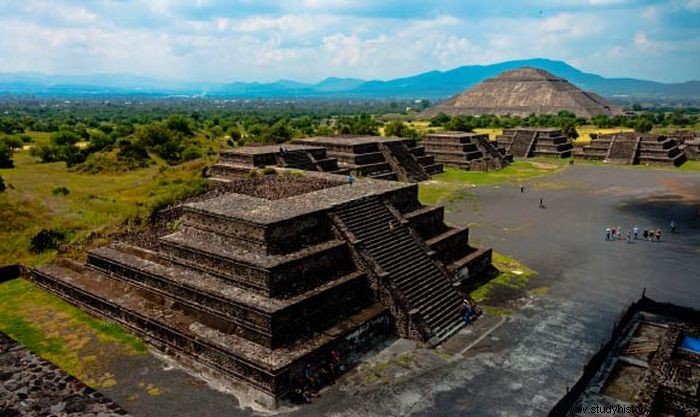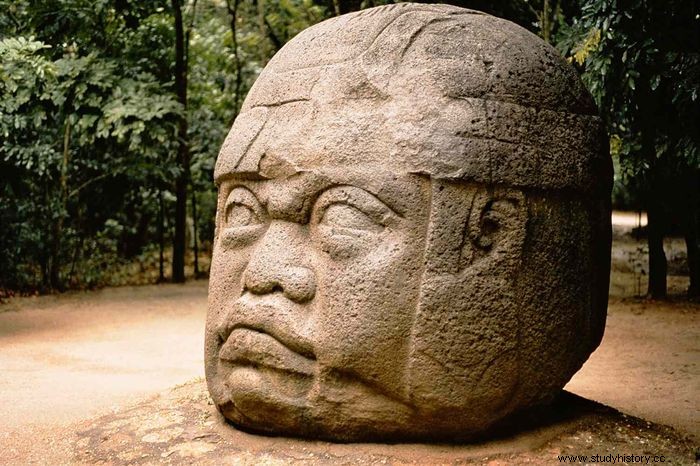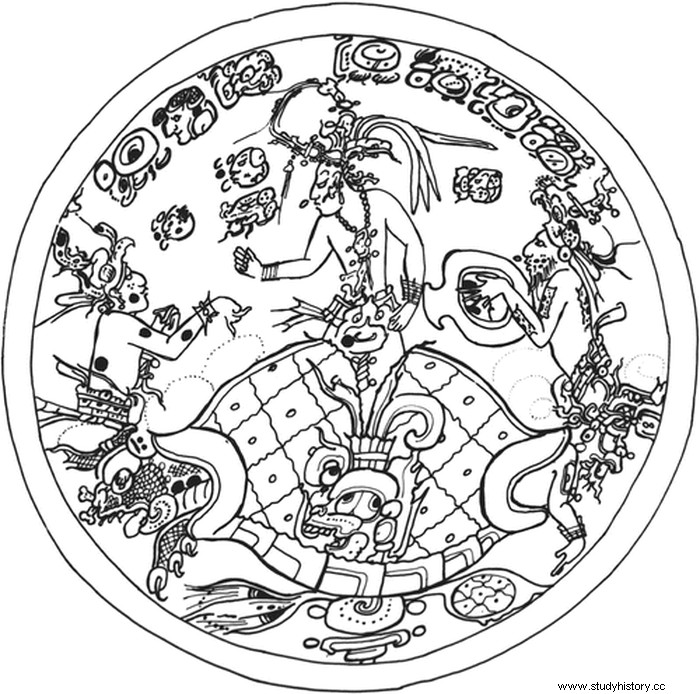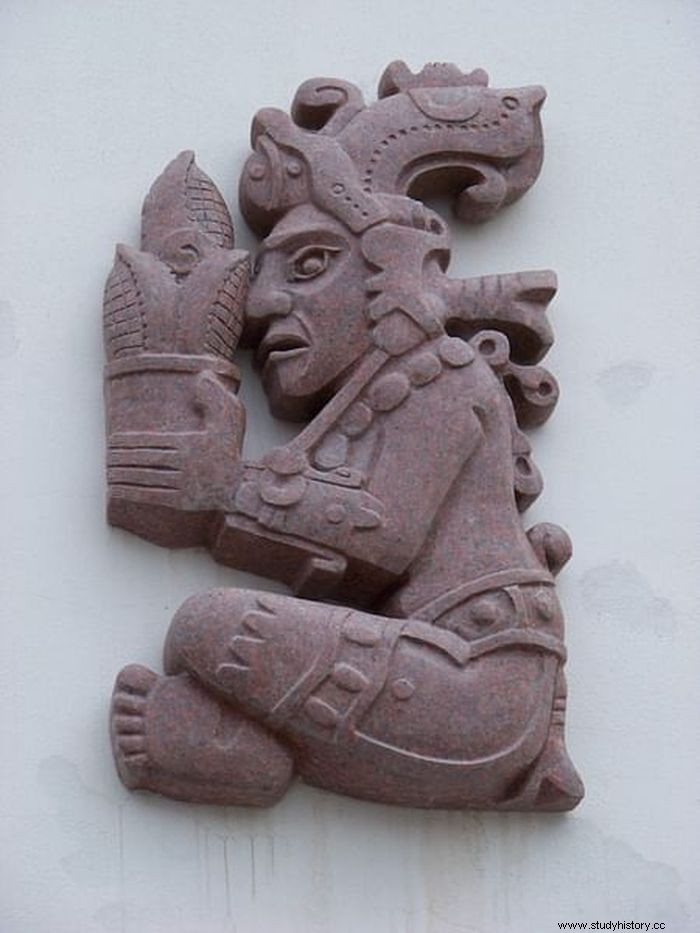Myths emphasize the reality and events surrounding the world's beginnings and foundations, people, basic food and supernatural beings - gods and cultural heroes. The many core textual sources of Mesoamerican mythology from the pre-Spanish period have often persisted in ruined form. When it comes to modern Mesoamerican peoples, most academics rely on anthropological evidence gathered by twentieth-century anthropologists.
Mesoamerica shares a shared cosmic vision and Mesoamerican mythology with a wide range of civilizations. The texts depicting Aboriginal civilizations were generally published in Spanish in the sixteenth and seventeenth centuries, especially concerning Central Mexico; others were written in Nahuatl by the conquerors themselves, brothers who began to evangelize or convert indigenous peoples. While a few complete manuscripts exist, such as Teotihuacan's creation of the sun and moon and the story of Quetzalcoatl, the majority of these books contain only parts of the mythology.

Popol Vuh is a large, well-structured Mayan cosmogonic tale composed around 1551. This tale was written in Quiché in Roman letters to be recited during their secret ceremonies (a tradition that still lives on among the present indigenous people).
The ethnographic data cover a wider range of topics, although they share some mythological aspects and pre-Spanish histories. There are also many Christian syncretisms because many saints and virgins are mixed with former deities.
Many symbols from pre-Spanish Mesoamerican mythology are popular and appear in archeological objects, such as the cosmic tree, the earth monster and the jaguar. The notion of duality dominated Mesoamerican thinking. Ometeotl, Nahuah's supreme god, depicts a union of opposites. He-she lives in Omeyocan, which is associated with Tamoanchan and Xochitlicacan and across the thirteen heavens. When Ometeotl is transformed into Omecihuatl and Ometecuhtli, the four gods - the creators of the rest of the gods and the world - produce:
- Fire
- Calendars
- The Ruler of the Realm of the Dead
- A large sea
- Aquatic gods
- The Earth Monster
- Twelve more heavens
- Omecihuatl and Ometecuhtli created a man and a woman, the first wizards and human parents.
According to a version of Mesoamerican Mythology folklore, the beautiful goddess Xochiquetzal lived there in happiness and abundance until she was captivated by Tezcatlipoca. In another version of the story, the gods tear the branches off the tree and cut the flower in the process. Eventually, the supreme gods Tonacatecuhtli and Tonacacihuatl punish them for their transgression and cast them to the earth and the underworld.
Alfredo López Austin wrote about Tamoanchan and the events there, drawing on folklore and Nahuatl poetry. López Austin concludes that the gods created sex, other space, other creatures and other times because of their misdeeds for which they were punished. For example, death had polluted the gods, but they could now breed.
According to Michel Graulich, the main motif at the beginning of Mesoamerican narratives is the transition from one period to another. It is caused by a break between the sky and the ground due to a violation. When the gods are expelled from Tamoancham, Tollan, Tlalocan and Aztlan - places mentioned as paradises or ideal regions representing marriage between opposites - a state of unity and harmony is achieved where the original couple and their offspring live in perfect peace. When the creators rebuke the gods, they are sent to the underworld. However, they return to the light after a sacrifice.
Myths about the cosmogonic realmThe concept of cyclical time and cosmogonic age (or "suns") is based on the premise that the gods created the cosmos so that mankind can serve, worship and feed the gods. This belief arose due to a cyclical process of creation and destruction in which the units (humans) that the gods wanted to serve them gradually grew.
According to Mayan tradition and Mesoamerican mythology, the gods initially created the animals, but the animals did not glorify the gods; instead they cried, croaked or screamed. The gods then created some men from mud, but they were destroyed by water, and created men from wood and women from reeds. These creatures are also unable to serve the gods and were destroyed by the revolt of their livestock, household items and a flood. The remaining humans evolved into apes.
In the end, the gods produced four men who were so radiant and had such excellent eyesight that they could see everything that existed. However, the gods acknowledged that they had failed again; if humans were flawless, they would be like the gods and not reproduce. As a result, "Heart of Heaven" blew into the eyes of the four men, obscuring them and preventing them from seeing anything beyond what was closest to them. As a result, their wisdom was wiped out. Unfortunately, this belief is still widespread among the Lancands.
In another Mayan account of Mesoamerican mythology, Hurakan and the other gods created thirteen men and twelve women by combining cornbread with the blood of a serpent and a tapir. Many current Mayan cultures still believe in the many cosmic periods and the various creatures. However, these beliefs have grown to include Adam, Eve, Jesus, and Mary in our day. Unfortunately, these organizations have also lost sight of human creations in order to worship and support gods.
The Flood and the Creation of Mankind

Water wiped out the final creation. The story of the flood and the birth of the new humanity is told in pre-Spanish variants, but it is also well recognized among many current ethnic groups. Tezcatlipoca chose a couple, Tata and Nene, to be spared from the flood in the pre-Spanish version of the story. He asked them to build a boat out of hollow wood and save himself. They grilled a fish when the flood receded, but the smoke reached the sky and angered the gods. So Tezcatlipoca arrived and turned Tata and Nene into dogs.
According to the popular ethnographic version of Mesoamerican Mythology, a man escaped the Flood on the advice of a supernatural figure. The man had corn and a bitch on his boat. When the floodwaters receded, he went to work in the field. Every time he came home, he discovered that food had been cooked. The man once hid and discovered that the bitch was a lady without her bitch's cheek. So the guy burned his skin and married the lady, and descendants of that couple repopulated the world.
Humans are also produced from the bones of individuals from earlier epochs in several pre-Spanish faiths. López Austin defined this myth of origin as the general origin of humans rather than the differentiated birth of human tribes from the Chicomoztoc (Seven Caves). When the world was rebuilt, the gods gathered and asked themselves, "Who will occupy the world?" They agreed to send Quetzalcoatl to the underworld to have the bones used to make the new humans. (According to another version of the story, Xolotl was transported to the underworld.) Quetzalcoatl traveled to the underworld and asked for the bones of the Lord of the Dead. The bones were given to Quetzalcoatl, but the Lord changed his mind at the last moment. Quetzalcoatl eventually found the bones and carried them to Tamoanchan, where the goddess Cihuacoatl Quilaztli crushed them and mixed the powder with Quetzalcoatl's penis blood. This drug was used to build the new humanity.
Myths about other creations of humanityThe first four gods formed by the original couple were Oxomoco and Cipactonal, who had the task of cultivating the land and spinning and weaving. They then got corn kernels to share. The children of Oxomoco and Cipactonal produced early humanity. According to Historia de Los Mexicanos por las Pinturas, when the sky collapsed and Quetzalcoatl and Tezcatlipoca restored it, they had to get four men to help them.
Another story about Mesoamerican mythology says that when the original four gods created a sun to illuminate the earth and fed it with hearts and blood to make it move, war was established; humanity was created to fight that battle. Camaxtli, the hunting and fighting god, struck a large stone with his staff, and four hundred Chichimecs came to populate the land, according to Tlaxcala legend. Camaxtli and the stone were both considered mythical ancestors of Chichimec, who eventually changed his name to Otom.
According to Tetzcoco's claims in Historia de México (1964), an arrow landed that was launched from the sky near Tetzcoco and made a large hole where a man and a woman appeared. However, they were in the form of busts with half bodies. This guy and lady produced offspring that colonized Tetzcoco by copulating with their tongues. According to another story, Citlalicue ("star skirt", ie the Milky Way) sent sixteen hundred sons and daughters to Teotihuacán, but they all died there. Citlalicue gave rise to a flint knife, according to Mendieta. It frightened her other children, and they threw the knife at the sky, where it fell at Chicomoztoc in Acolman, near Teotihuacan.
The sixteen hundred sons and daughters given by Citlalicue (or who magically emerged from the flint knife) were more divine than humans; they asked their mother to provide them with servants.
The sun, the moon and the stars

The story of the fifth sun (the current period) is one of the most famous in Mesoamerican mythology. When everything was dark, the gods gathered at Teotihuacan (historically associated with the glorious city of Teotihuacan) to create a new sun. Two gods volunteered to be sacrificed:the wealthy Tecuciztecatl, who carried out fines with expensive goods, and the poor and sick Nananhuatzin, whose victims were only reeds, grass balls, maguey ridges and paper. Both gods were escorted to a sacred fire after four nights of penance. Tecuciztecatl was appalled by the power of the fire and withdrew, at which time Nanahuatzin threw himself into the flames, cleansed him and turned him into the sun.
Tecuciztecatl, inspired by this transformation, also jumped into the flames. But it had faded and flared no longer radiant, so he turned into a lesser light. Eventually he was transformed into the moon (Heyden, 1987). When the moon appeared, one of the gods struck it in the face with a rabbit, leaving a visible mark. After this, the sun remained stationary and refused to move unless the gods were sacrificed. (R. Barlow documented a version of this story in Tepoztlan, Morelos, in 1949, and another version is still popular with the Huichol people.)
Popol Vuh contains the Mayan version of the sun's creation story, which tells the story of the companies of the twins Hun Hunahpu and Vucub Hunahpu. The sons of a hunter were intelligent men, artists and fortune tellers. The twins loved to play ball, and the noise they created annoyed Lords of Xibalba. These gentlemen took the form of various diseases. They summoned the twins to their domain and subjected them to trials until they were sacrificed and buried. She Hunahpu's head was put in a gourd tree. Ixquic, the daughter of one of Xibalba's lords, approached the tree and the serpent's head. A hunter spat on her hand, which led to her becoming pregnant.
Ixquic was sentenced to death because of this, but she escaped with the help of her future executioners, two owls. Ixquic returned to Earth's surface and gave birth to another set of twins, Hunahpu and Xbalanque, cared for by their grandmother. After various adventures, including turning their half-brothers into monkeys, they begin to play the ball game; they are summoned to Xibalba again, but this time they pass the trials and trick the rulers of the underworld. However, the Hunter and the Deer Jaguar eventually burn and turn into the sun and moon.
Venus was also created as a consequence of the sacrifice of Quetzalcoatl, the ruler of Tollan, who left his city after being deceived by his rival gods, Tezcatlipoca and Huitzilopochtli, and went to a land called Tlillan Tlapallan, the land of red and black. He burns here and becomes the morning star.
The origin of corn and other edible plants
Because corn was Mexico's most important crop, much of the ceremonial life was centered on cultivation. This led to several myths about it, both pre-Spanish and modern, most of which are anthropological.
According to pre-Hispanic tradition, Quetzalcoatl discovered a red ant carrying a corn kernel and repeatedly asked where she got the ant. The ant finally told him she got it from Tonacatepetl. As a result, Quetzalcoatl changed into a black ant and acquired the nuclei, which he brought to Tamoanchan, where the gods chewed them and placed the nuclei in people's mouths to strengthen them. They then sent Nanahuatl to destroy Tonacatepetl, while tlaloque collected four-colored corn and other edible seeds to make them available to mankind.
According to another account of Mesoamerican mythology, corn and edible plants originated from the body of the deity Cinteotl. The story of the ants hiding the corn kernels still exists in various anthropological accounts.

Ethnographic representations of a maize cub can be seen all over Mexico. His name could be Oxchuk, Dipak, Piltontli or one of several other names. George Foster revealed the story where two ancient people discover an infant with golden hair inside an egg. The infant has amazing abilities and good and terrible relationships with animals. After a while, the old couple tries to murder and devour him, but he learns their plot and kills them first. The boy later has several adventures, one of which involves defeating Hurakan, a sea deity and thunder.
His father's children are killed in the Totonac version because he likes to play the violin. Shortly after the birth, the boy dies and is buried by his mother, and a corn plant emerges from his grave. She chops some kernels and throws some grain into the river. A turtle keeps one on the shell, and the corn baby is born again from that grain. The young boy embarks on a series of adventures, including the formation of thunder and rain clouds.
Maguey was a very important plant in Central Mexico, where it was used, among other things, to make the intoxicating drink octli or pulque. According to legend, Quetzalcoatl traveled to heaven in search of a virgin god named Mayahuel. Instead, he discovers her among other virgins being cared for by their grandmother, a tzizimitl (a monster). Quetzalcoatl woke Mayahuel and told her that he brought her to earth, which he achieved by converting them into a tree with two branches.
One of those branches represented Quetzalcoatl, while the other represented Mayahuel. When the tzizimitlen realized that Mayahuel had disappeared, she ran after her, found the tree, broke Mayahuel's branch, and ate her up with the other tzizimitlen. Quetzalcoatl took Mayahuel's bones and sowed them, and the first maguey sprang from those bones.
the conclusion
The Mesoamerican mythology listed above is a collection of creation myths attributed to a number of pre-Columbian Mesoamerican cultures and civilizations and Mesoamerican literature.
